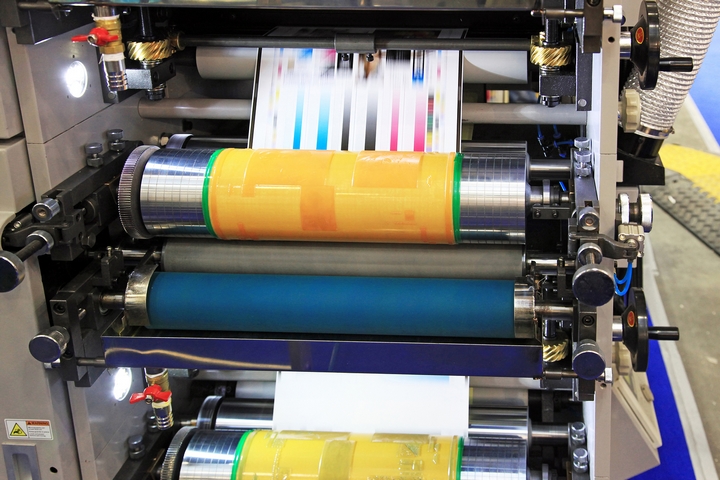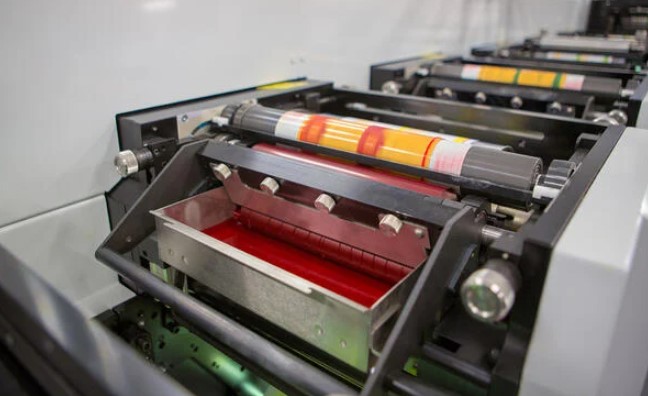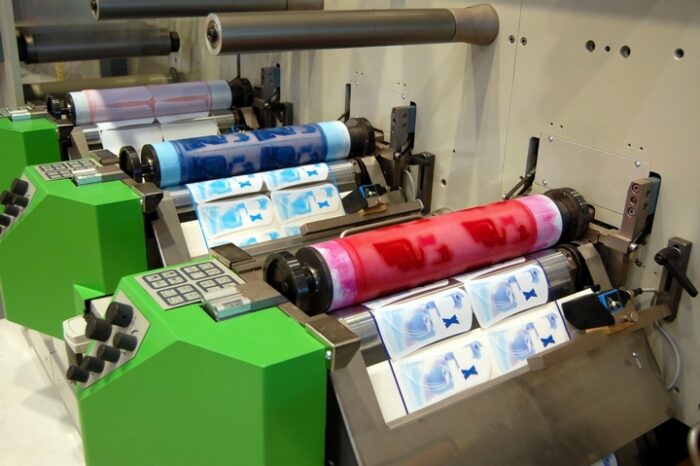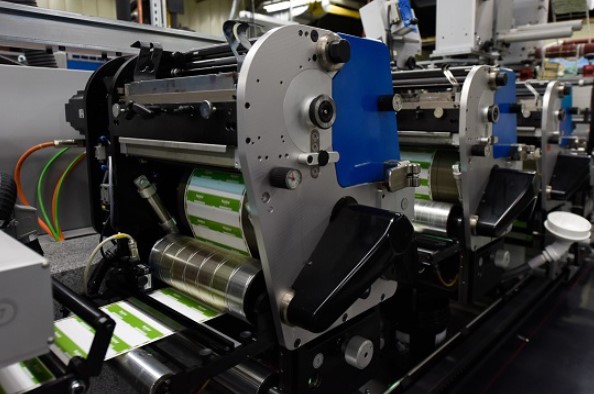
Flexographic printing, often known as “Flexo printing,” is a type of printing that has the highest efficiency, flexibility, and consistency of any printing method. Because of its adaptability, flexo printing can print graphics and labels on a wide range of substrates, including plastic, cellophane, and paper. Here’s all you need to know about enhancing your company’s packaging using this technology.
What Is Flexographic Printing?

In flexographic printing, flexible photopolymer printing plates are used to produce high-resolution images on a variety of surfaces.
The raised picture is imprinted on these rubber plates, which are subsequently wrapped around cylinders mounted on a web press. The inked plates transmit ink from the roll to the substrate as they rotate rapidly, resulting in high line count images. However, you will need a different plate for each color for precision and quality.
Flexo printing is popular for delivering high-resolution images on a variety of materials, in addition to its excellent efficiency. Flexo printing also allows for the use of a variety of inks, including water-based and UV inks, which makes it ideal for industries like food and beverage where certain inks are prohibited.
Flexographic printing is not a new method; the underlying process that underpins it dates back to the late 1800s when it was known as letterpress or rubber stamp. This printing process was highly rudimentary at the time, not exact, and had flaws, owing to the basic materials and designs.
However, flexography technology has progressed considerably since then, and it now allows for the printing of intricate, precise, and varied designs. Flexographic printing has become increasingly popular in various industries, including food and beverage, pharmaceuticals, and publishing, thanks to the incorporation of advances such as Direct Laser Engraving and the development of materials.
Flexographic printing can be used to print on a variety of materials. Flexography can print on coated or uncoated paper, corrugated cardboard, metal, plastic film, and other substrates.
Flexography is widely used to print on numerous everyday objects due to its flexibility of leaving an impression on different substrates.
How Does Flexographic Printing Work?
Flexo printing is a cost-effective method of generating relief images on polymer image carriers such as plates and sleeves. FlexStor has the best sleeve storage system for Flexographic printing. The ink is transmitted from a pan to the plate via an anilox roll, which is wound around the cylinders. However, here are some of the steps involved in flexographic printing.
1. The Design Process
The client will submit a print-ready artwork. After the artwork has been created, it must be optimized for use on a flexographic printing press. Because the image carriers or plates cannot be modified once they have been manufactured, the original artwork must be flawless.
One of the most important things to remember is that a picture created on a flat surface will not appear the same when placed on a round cylinder. You could use distortion-free in-the-round image carriers in this scenario.
2. Select The Material And Use It On The Press

After you’ve decided on the suitable printing ink and material for your design, you’ll need to print it. Your labeling and packaging department will be able to assist you in determining which option is the best for you.
Nonetheless, it’s important to remember your industry’s regulations. Non-porous materials and non-toxic ink, for example, are required in the Food & Beverage industry.
These parts will be fed into the flexo printing press once you’ve selected them. The machine’s configuration will allow for a continuous printing process, allowing for quick and accurate output.
The flexo printing press is ideal for large orders or printing needs since it works at higher speeds and produces accurate results.
3. Finishing And Drying
After the relief image on the plate has been transferred to the substrate, the machine will continue to move through plate-less sections. It will dry the ink, allowing the image to be fixed and mistakes to be avoided. Finally, the substrate is removed from the machine and coiled up again before being sent to the cutting section, where the individual prints are separated from one another.
Advantages of Flexographic Printing

Of course, each printing method has its own set of characteristics and benefits. Despite this, flexo printing is the industry leader. Furthermore, it is suitable for medium and long print runs and provides the best return on investment. Consider the following advantages:
- It can print images on plastics, brown papers, acetate films, corrugated boards, textiles, and cellophane, and it can produce bright continuous patterns at high quality.
- It can apply water-based inks, UV curable inks, and solvent inks, all of which are incredibly fast-drying, making it environmentally friendly and time-saving.
- It can print millions of impressions and support a wide range of cylinder repeat lengths to meet customer needs.
- The method is also more cost-effective than its competitors since its fast-drying inks allow for speedier manufacturing.
- Speeds of up to 300 meters per minute are possible using a flexographic press. Even though it takes some time to set up, the rate with which you can print on different materials compensates for the initial set-up time. Set-up times are also decreased when new advancements occur more frequently.
- Cyan, Yellow, Black, and Magenta are the four primary colors used by most flexo printers (CMYK). They can, however, accommodate up to ten distinct colors. As a result, you can print anything in any color you want.
- If you use recycled inks, water-based products, and water-washable plates, flexo printing can be made environmentally friendly. The printed material is produced with fewer solvents and pollutants, and it’s also quite user-friendly.
Conclusion
It might be a good moment to switch to flexographic printing technologies if you’ve been considering it. The speed and fewer maintenance requirements mitigate the cost of purchasing and setting up the equipment. It’s critical to assess the benefits and drawbacks, but you could benefit both your company and your customers with this revolutionary method. It also allows you to represent yourself as environmentally friendly and cost-effective.








